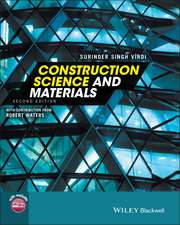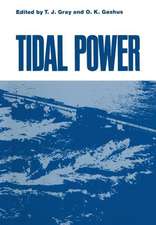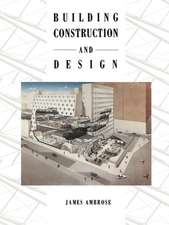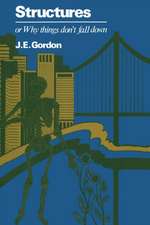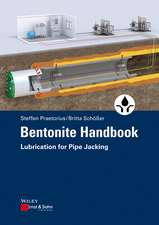Pile Driving by Electroosmosis
Autor B. A. Nikolaeven Limba Engleză Paperback – 26 mai 2012
Preț: 377.95 lei
Nou
Puncte Express: 567
Preț estimativ în valută:
72.32€ • 74.61$ • 60.35£
72.32€ • 74.61$ • 60.35£
Carte tipărită la comandă
Livrare economică 26 martie-09 aprilie
Preluare comenzi: 021 569.72.76
Specificații
ISBN-13: 9781475704556
ISBN-10: 1475704550
Pagini: 68
Ilustrații: IV, 62 p. 21 illus.
Dimensiuni: 210 x 279 x 4 mm
Greutate: 0.18 kg
Ediția:1962
Editura: Springer Us
Colecția Springer
Locul publicării:New York, NY, United States
ISBN-10: 1475704550
Pagini: 68
Ilustrații: IV, 62 p. 21 illus.
Dimensiuni: 210 x 279 x 4 mm
Greutate: 0.18 kg
Ediția:1962
Editura: Springer Us
Colecția Springer
Locul publicării:New York, NY, United States
Public țintă
ResearchCuprins
I. Phenomena Originating in Ground while Sinking Piles by Electroosmosis.- 1. Electroosmosis and Electrolysis in Clay Ground.- 2. The Effect of Direct Current on the Resistance of the Ground to Sinking of a Pile-Cathode.- II. The Influence of Mineral Composition and Physical Properties of the Ground on the Effectiveness of Sinking Piles by Electroosmosis.- 3. Methods of Investigation and Characteristics of the Ground.- 4. Results of Experimental Tests.- III. The Effect of Area of Electrodes on Rate of Driving Wooden Piles.- 5. Laboratory Investigations.- 6. Experiments under Field Conditions.- IV. Driving Steel Piles by Electroosmosis.- 7. Effectiveness of the Electroosmotic Method of Driving Piles under the Geologic Conditions of the Experimental Setup.- 8. The Effect of Changes in Voltage, Current, and Current Density on the Rate of Sinking Steel Piles.- 9. The Effect of Rate of Driving Steel Piles and the Effect of Distance between Pile-Electrodes on the Acceleration of Sinking by Means of Electroosmosis.- V. Driving and Vibrosinking Reinforced-Concrete Tubular Piles by Electroosmosis.- 10. Investigations on an Experimental Stand.- 11. Application of the Electroosmotic Method of Accelerating the Sinking of Reinforced-Concrete Tubular Piles for the Stoitel’ Bridge in Leningrad.- VI. Restoration of Bearing Capacity of Piles after Electroosmotic Driving.- 12. Results of Dynamic and Static Tests on Piles.- VII. An Approximate Method of Computing the Parameters of Direct Current, Optimum Penetration per Blow, and Area of Electrodes..- 13. Computing the Parameters of Current and the Optimum Penetration per Blow for Steel Piles.- 14. Computing the Parameters of Current and Optimum Area of Electrodes for Nonmetallic Piles.- VIII. Practical Recommendations for theElectroosmotic Method of Accelerating Pile Driving.- 15. Geologic Conditions Favorable for Driving Piles by Electroosmosis.- 16. Arrangement of the Electrodes.- 17. Measures for Eliminating Leakage of Direct Current.- 18. The Operation of Pile Driving by Electroosmosis.- 19. Experimental Work on Sinking and Testing Piles -.- 20. Data on the Economy in Time and Electrical Energy when Driving Piles by Electroosmosis.- 21. Some Potential Future Uses of Electroosmosis in the Field of Foundation Construction.- References.





